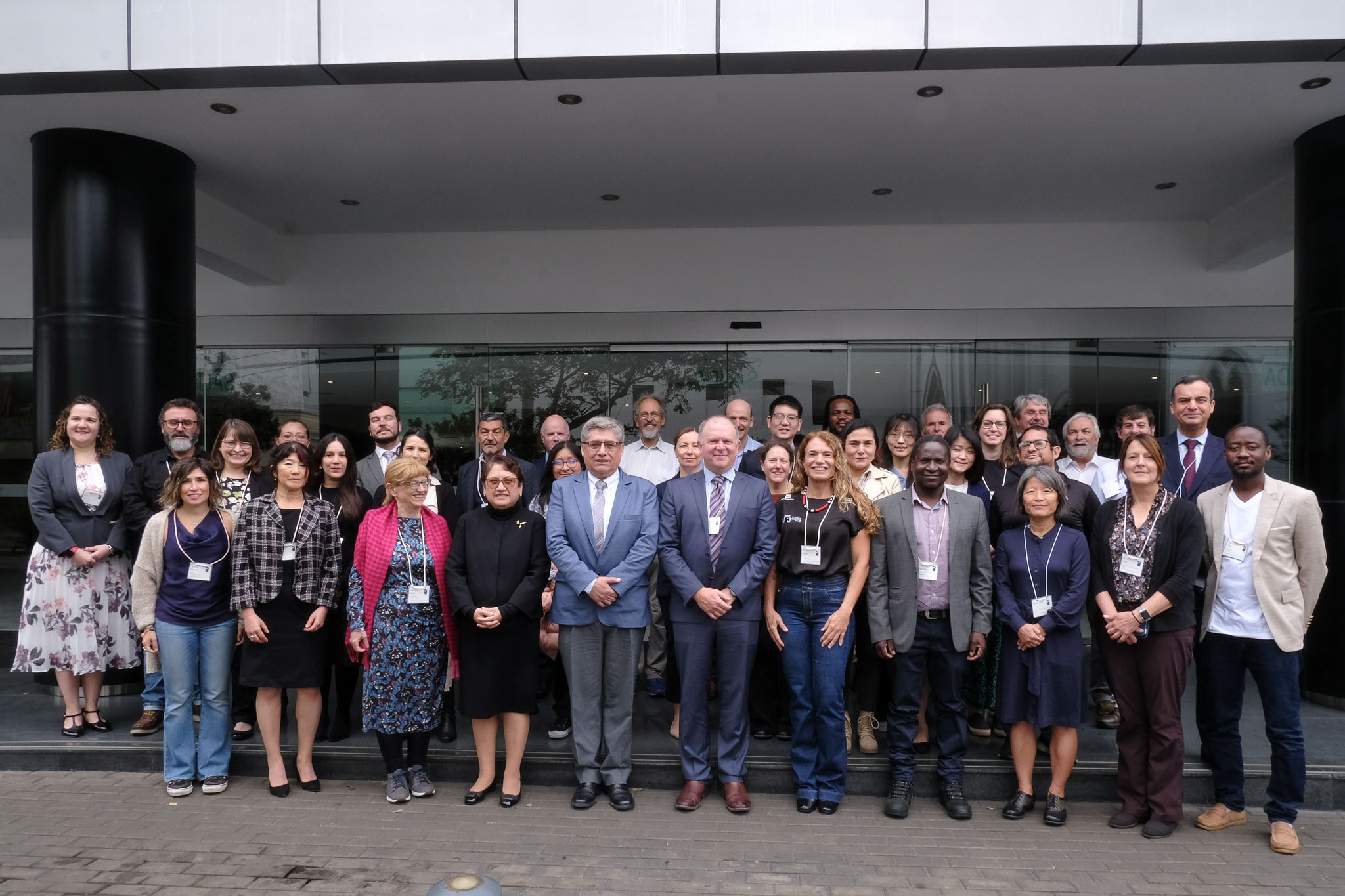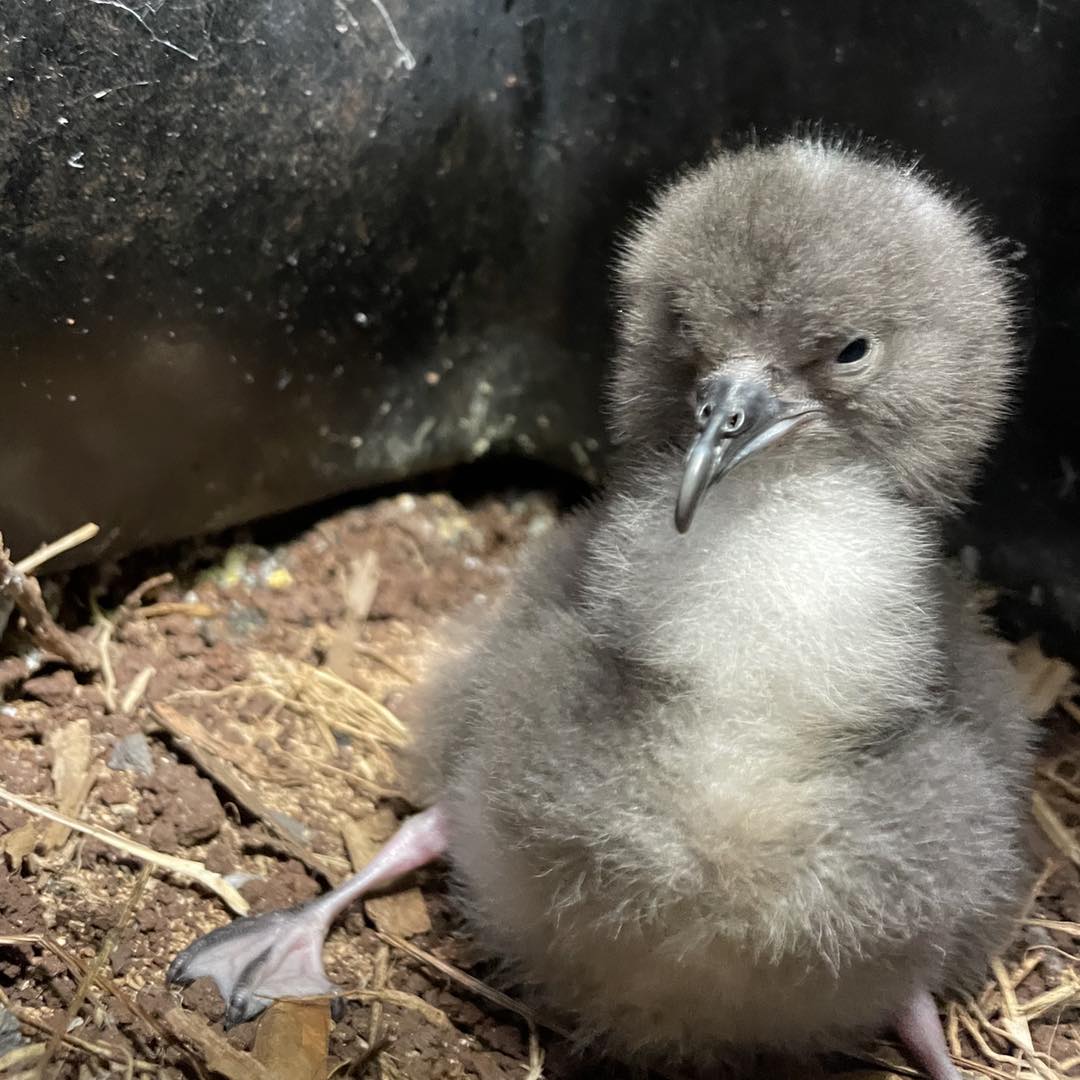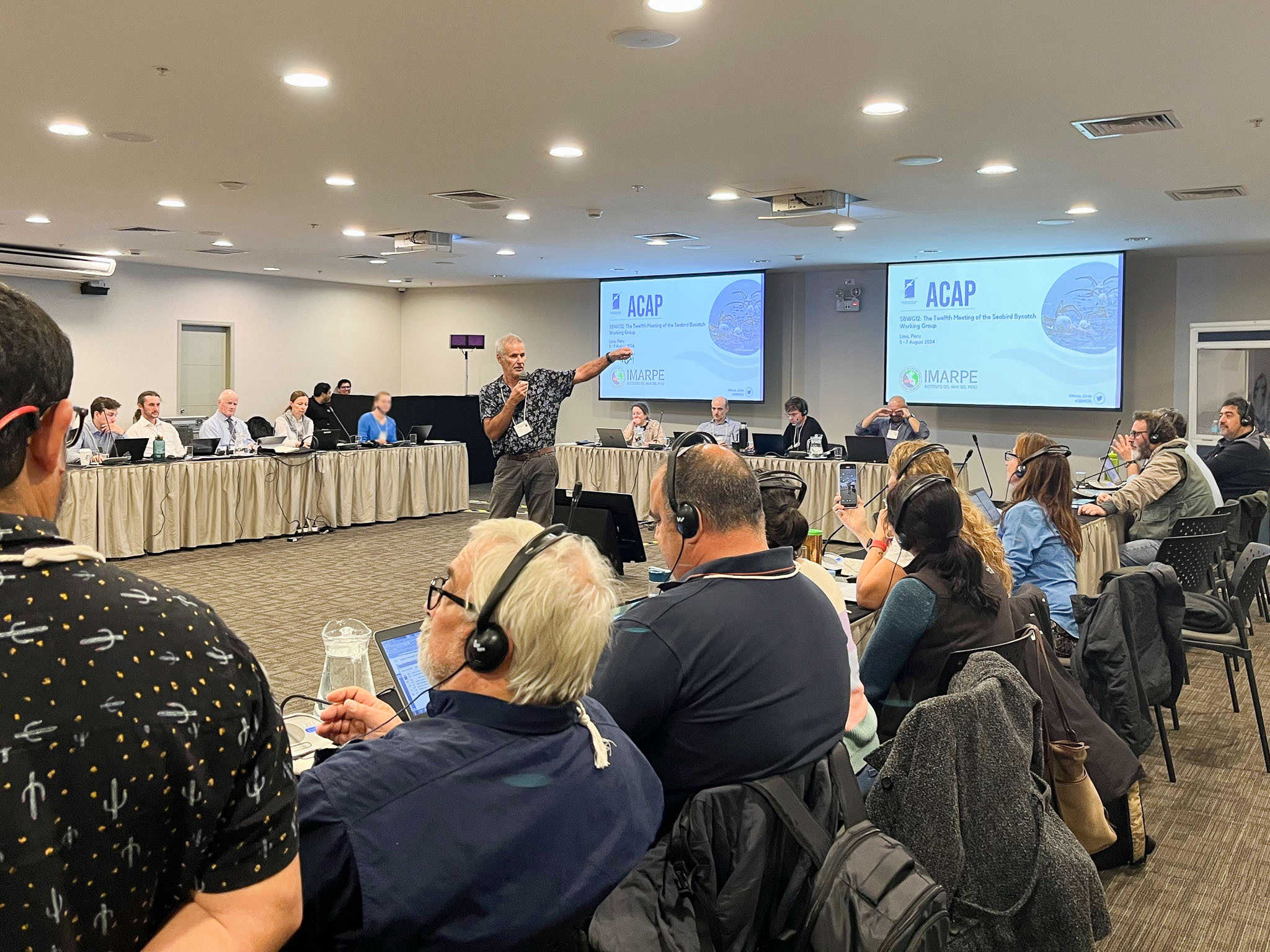 Participants of the Fourteenth Meeting of ACAP's Advisory Committee (AC14) taking place in Lima, Peru. Ambassador Elvira Velázquez Rivas Plata, General Director of Sovereignty, Limits and Antarctic Affairs of the Ministry of Foreign Affairs of Peru and by Mr. Edward Barriga Rivera, General Director of Research in Demersal and Coastal Resources, Peruvian Marine Research Institute, formally opened the meeting.
Participants of the Fourteenth Meeting of ACAP's Advisory Committee (AC14) taking place in Lima, Peru. Ambassador Elvira Velázquez Rivas Plata, General Director of Sovereignty, Limits and Antarctic Affairs of the Ministry of Foreign Affairs of Peru and by Mr. Edward Barriga Rivera, General Director of Research in Demersal and Coastal Resources, Peruvian Marine Research Institute, formally opened the meeting.
Standing 4th and 5th from front left are Ambassador Velázquez and Mr Barrigo.
The urgency of the task at hand for those in attendance of the Fourteenth Meeting of ACAP’s Advisory Committee (AC14) in Lima, Peru was underlined at the meeting’s opening on Monday.
The meeting was formally opened by Ambassador Elvira Velázquez Rivas Plata, General Director of Sovereignty, Limits and Antarctic Affairs of the Ministry of Foreign Affairs of Peru and by Mr. Edward Barriga Rivera, General Director of Research in Demersal and Coastal Resources, Peruvian Marine Research Institute.
Ambassador Velázquez welcomed participants in her address, expressing her pleasure in Peru hosting the Advisory Committee meeting and her hope that it would be productive.
“Peru is pleased to host the 14AC meeting and expresses its commitment to achieving and maintaining conservation status for albatrosses and petrels, a task that becomes more urgent in the face of the conservation crises that these species face, as warned by this Advisory Committee in 2019, a situation that is worsening in the context of the triple environmental emergency that the planet is facing and which is exhibited through climate change, biodiversity loss and pollution.”
Ambassador Velázquez commended the ongoing scientific research, population monitoring, and efforts in capacity building and awareness-raising that ACAP promotes. She also highlighted ACAP's role in shaping international seabird bycatch mitigation measures and its relevance to emerging global biodiversity conservation agreements. Additionally, she expressed gratitude for the support Peru has received in capacity building and network development.
Mr. Edward Barriga Rivera, General Director of Research in Demersal and Coastal Resources at the Peruvian Marine Research Institute (IMARPE), conveyed greetings from IMARPE's Director, Jorge Paz, and reaffirmed Peru’s commitment to the conservation of albatrosses and petrels. He expressed his best wishes for the success of AC14.
Eleven of ACAP’s thirteen Parties are attending the week long meeting which closes on Friday.
14 August 2024

 English
English  Français
Français  Español
Español 

 Albatross Task Force Instructor, Leo Tamini (left) and electronic monitoring compliance device inventor, Sihle Ngcongo (right) hold up the device outside the Seabird Bycatch Working Group meeting in Lima, Peru. Tamini plans to test the device in Argentinian Fisheries.
Albatross Task Force Instructor, Leo Tamini (left) and electronic monitoring compliance device inventor, Sihle Ngcongo (right) hold up the device outside the Seabird Bycatch Working Group meeting in Lima, Peru. Tamini plans to test the device in Argentinian Fisheries. 
 Nigel Brothers took to the floor to present his paper, "Minimum Weight at the Hook Allowance of 50 g Inclusive of Hook Weight for Pelagic Longlines"
Nigel Brothers took to the floor to present his paper, "Minimum Weight at the Hook Allowance of 50 g Inclusive of Hook Weight for Pelagic Longlines"